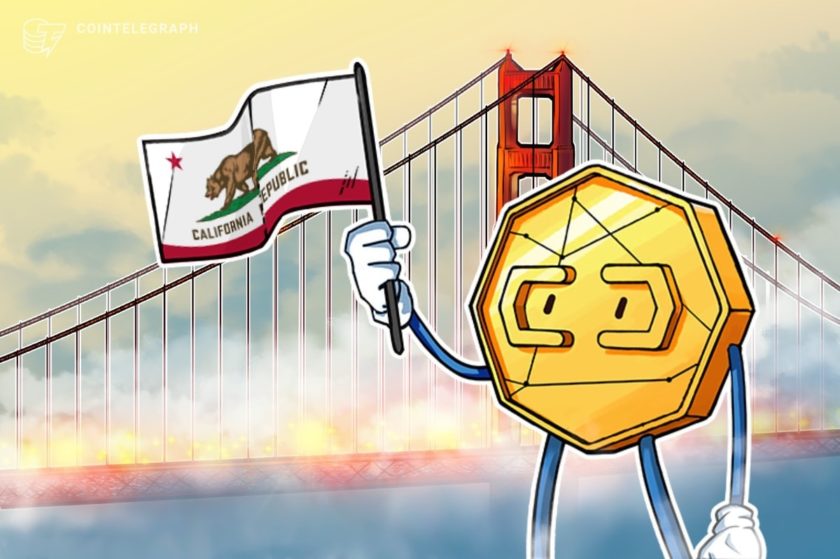Blockchain offers federal and state governments a powerful opportunity to reform public markets and costly economic systems such as land, water, spectrum and energy management – without the need for central control – according to experts and speakers at a recent national seminar series on Blockchain.
Much of the public attention around blockchain has been focussed on the crypto-currency, bitcoin. But the seminar heard the real interest for government is blockchains ability to share trusted transactional data between agencies and jurisdictions, without any one agency having to control the system. Each agency can manage its own data, in a single source of truth across government.
This comes as all governments are looking to share data across their portfolios and with each other. This is being driven by the need to create integrated personalised services, reform costly and slow business systems, the use of multiple data sources to inform and redesign policy and programs.
At its most basic blockchain is similar to a public spreadsheet, a ledger that all parties can see, offering full visibility on the information, which is then signed and locked in the block, and connected into a chain as an audit trail. Once locked everyone can trust the information as a single source of truth.
Each transaction in a block can also be programmed — called smart contracts — offering government agencies a powerful mechanism to overhaul complex business systems such as procurement supply chains, stock selling, health payments, tracking the pedigree of food and livestock, and managing the many registries governments centrally control.
Decentralising control
The seminar heard it was blockchain’s ability to run without central control that opens up a whole world of reform.
The co-author of two Data 61 reports about Blockchain, Dr Mark Staples, explained that blockchain’s distributed approach logically centralises information, but administratively decentralises control. This he said allows each agency or jurisdiction to retain its own authority while working with others on a single source of truth.
This opens the real possibility of the state governments, for example, creating a federated system for say car registrations, without having to bring in the national government to centrally administer a system.
For major government managed resources such as land, water, spectrum, transport and energy, this offers an ability to rethink how these markets are managed. Blockchain can represent these markets digitally, meaning governments can manage the many moving parts in a much more efficient way, removing most of the cost and delays.
Moreover this can create whole new economies around these markets, opening up investment and innovation in traditionally bureaucratic, process heavy markets and systems.
Katrina Donaghy, Co-founder and Co-CEO of blockchain start-up, Civic Ledger, told the seminar of the work they had been studied Australia’s $16 billion water markets, and how blockchain’s ability to represent water using digital tokens and to program over 16,000 different business rules offers could reduce nine week transaction times to near real time. And offer savings of between $50 to 100 million.
The seminar heard that complex multiparty systems, like conveyancing or the winding up of an estate, are ripe for reform, exploiting blockchains distributed methodology that enables all parties to trust the information without the need for lawyers, banks, governments or other trusted intermediaries.
According to Alan Thurlow, IBM’s UK lead for blockchain in government, it is the opportunity blockchain offers to redesign government services in an open, collaborative and trusted ecosystem, that offers a real chance to not just digitise paper based systems, but to rethink the whole approach.
“Our default when we’ve had a lack of trust in the past is to go back to the paperwork,” said Thurlow. “That’s what we’re used to.”
“Where we need to be going – is that blockchain will become part of that trust. That will be the place where we go, and we won’t need to have all these documents.”
“Think about land transfer. You might have a broker, and your estate agent, all of whom have their own system of records,” he said. “All information is stored on the ledger, so you have a single version of the truth. That potentially allows us to do away with all sorts of documentation and paperwork.”
Focus on a clear problem
All speakers confirmed the need to focus on the business problem or pain point that needs to be solved. Thurlow advised any agency looking to create blockchain-powered services should establish a clear purpose to an existing pain point, rather than innovating for the sake including new technology.
“There’s no point having a blockchain if you don’t have a problem,” he said. “You’re not going to see value there and you’re not going to get any fundamental change to make that happen.”
“You need to build a proof of concept around the use case, and then integrate that proof of concept into a legacy system.”
There was strong consensus that agencies need to think of blockchain as a business, not a technological decision. The technology is relatively well understood, but the challenge for governments is organising around known pain points or use cases.
Thurlow said the UK experience with blockchain was that a solution can be deployed quite quickly, with proofs-of-concept rolled often in weeks. Thurlow identified over a dozen proofs of concept projects where governments around the world were using blockchain to remove traditional pain points.
These included using blockchain to manage human resource systems, tracking the providence of food, registering electric bikes and ensuring the authenticity of doctors’ credentials. In the UK, blockchain has even been used to pay actual energy units to those entitled to heating support, instead of traditional welfare benefits.
Staples told the seminars governments were expected to use permission or private blockchain, as opposed to the public blockchain which has been popularised by bitcoin.
He said blockchain was open by its nature, which meant public blockchain would not be appropriate for moving sensitive data, such as personal information or tax. Because of this both Staples and Thurlow said they expected private blockchain to be used in many of the enterprise use cases.
The CTO for the Digital Tansformation Agency, Matthew Goonan, observed that, for an emerging technology, many of the elements of blockchain had been derived from well understood earlier technologies, which are in widespread production.
For example, web security certificates use a peer to peer system similar to how blockchain works. The certificate transparency initiative used merkle trees, one of the underpinning technologies used in blockchain solutions. Its verifiable append-only logs offers the public the capability to scrutinise and trust SSL certificates.
Creating a use case for blockchain
In order to create that use case, government services need to treat blockchain as just part of an overall ecosystem and not as the solution itself.
Government departments should take a citizen-first view of blockchain technology, said Thurlow.
“This isn’t just about ATO services, or any one agency – it’s about government co-created with the citizen,” said Thurlow. “We are going to be designing government services that actually fit the service and the purpose that we want.”
This was echoed by Donaghy: “Blockchain is not a technological decision, it’s a business decision,” she said.
In their work on water markets Donaghy explained how Civic Ledger was able to build a use case for blockchain within the context of water trading in the agricultural sector. She said the focus had been on reverse-engineering the future state, then deciding if blockchain plays a role at any point along that journey.
“When looking for application, that is what you should identify – and I haven’t even spoken about terminology like hashes, crypto, block sizes, etc.”
It was also noted that governments are often only part of a solution and the challenge is to track the full citizen interaction as part of the service redesign. For example when a relative passes away, families often have to organise a whole suite of services ranging from funerals, churches and catering, together with dealing with multiple government agencies.
It was also suggested that it was important understand the economic winners and losers that comes from decentralising control. Blockchain often removes the traditional intermediary from a process — lawyers, accountants and financial institutions — so any reform process will need to consider the economic impact of the changes and manage them accordingly.
The challenge of whole of government reform
Citizens often have to bear the cost and delays of costly administrative business systems such as the dissolution of a family’s assets after divorce or separation, moving states or countries, and winding up a business.
Many of these involve multiple agencies and jurisdictions, raising the issue of who takes the lead to reform processes and the machinery for overhauling often archaic paper based processes.
It was noted this is increasingly falling to central agencies to take a whole of government approach to citizen service reform and lead the business and stakeholder coordination that is needed to push through these changes.
It was observed central agencies by their nature are a long way from service delivery front line, which means they need to strongly partner with the big service delivery agencies — typically the service portals, the roads and human service agencies.
There is also a gap around the co-ordination and design of services, which involve multiple jurisdictions. While COAG plays a useful policy co-ordination role, it was observed there is no one well-resourced central delivery agency that is driving complex service redesign across multiple jurisdictions. Nor any strategy that prioritises these reforms.
Setting the rules
Governments also have a strong role to play in setting up the industry standards and overhauling governance regimes. Staples said Australia was already taking a leading role in standard setting and the adoption of consistent protocols to ensure interoperability.
The seminars heard the distributed nature of blockchain means regulators and registrars will need to amend their governance and regulatory approaches, recognising that there is no longer a central intermediary to “oversee” the transactions.
Goonan noted that government, by its very nature, is inherently centralised. Much of the current design of the system vests trust in this authority to create and uphold the rule of law, and arbitrate when there is disagreements about the interpretation of records. The use of technology like blockchain, which allows only for verified additions to its records, effectively empowers interested parties to check the behaviour of such central authorities.
Another issues that needs to be dealt with is the permanence of the data. Blockchain is transparent and the data can not be changed. This is a core strength of blockchain is why it is sometimes called the “honest bureaucrat”. But as Staples observed, this also introduces issues, when say a court requires information to be redacted or removed.
Many see blockchain as similar to how we considered the internet in the 1990s. At a broader level Thurlow noted that if government had taken a stronger role around the design of the internet then some of the problems around security and consent could have been better anticipated. The same opportunity exists now with blockchain to ensure it is well governed and managed for the broader public interest.




